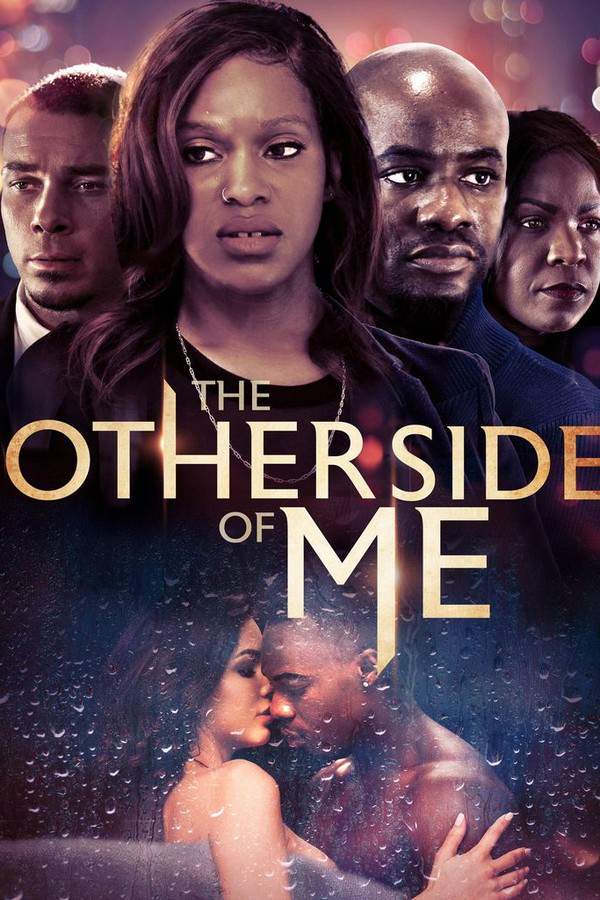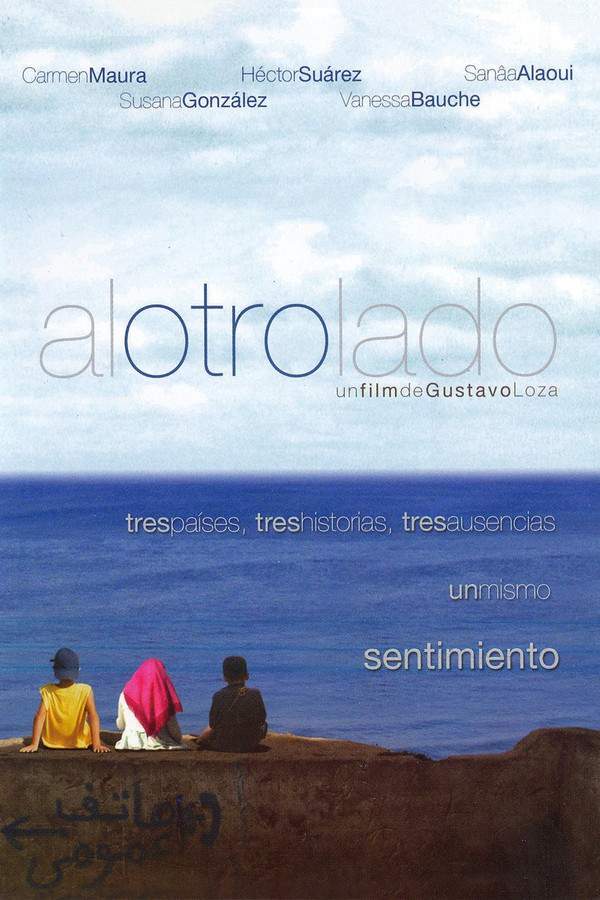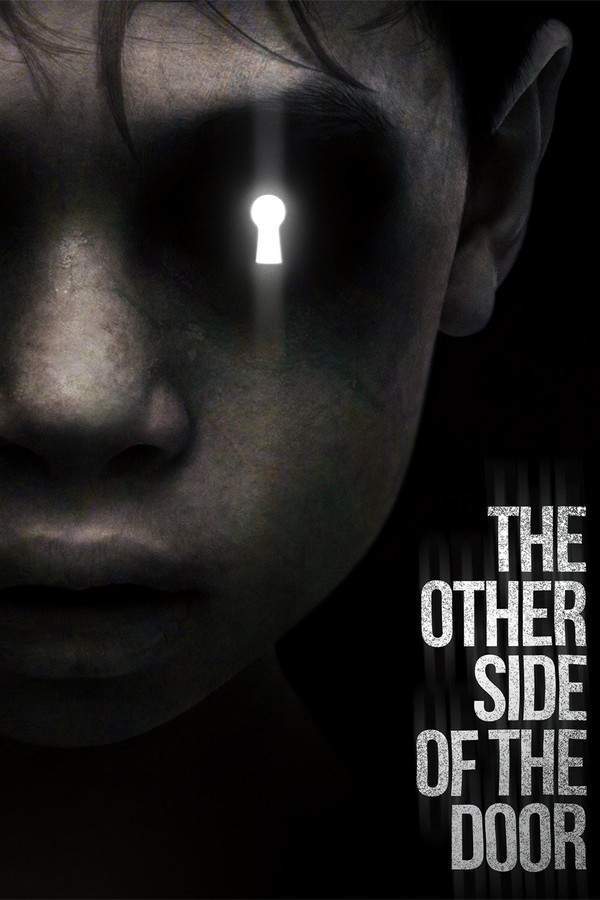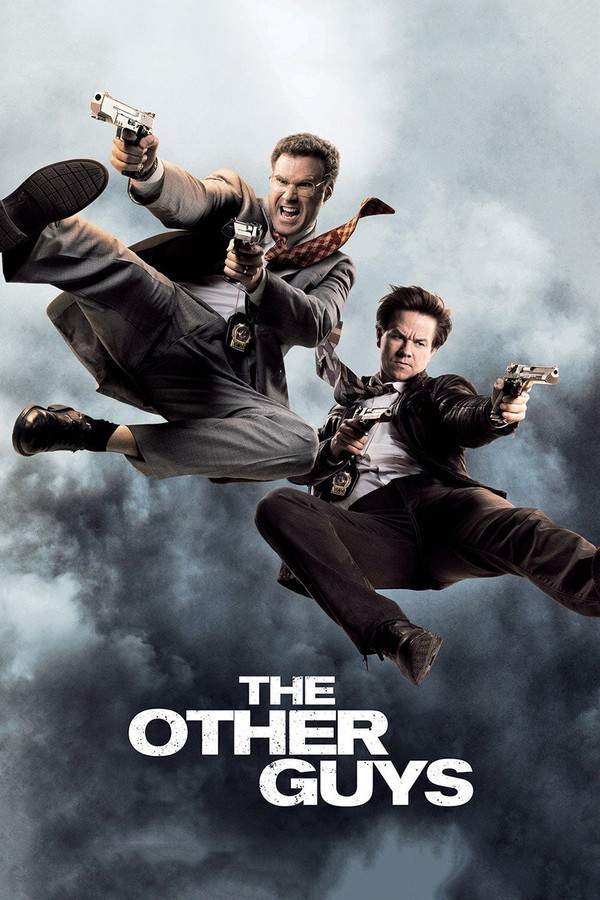
The Other Side 2016
Directed by

Roberto Minervini
Made by

Film Movement
Test your knowledge of The Other Side with our quiz!
The Other Side Plot Summary
Read the complete plot summary and ending explained for The Other Side (2016). From turning points to emotional moments, uncover what really happened and why it matters.
The film opens with a vivid scene in Mumbai, India, where the bustling market is alive with sound, leading us to a quaint restaurant. Here we meet the married couple, Maria and Michael, played by Sarah Wayne Callies and Jeremy Sisto respectively. The conversation between them reveals the joys and trials of their relationship, highlighted when Maria surprises Michael with the news of her pregnancy. Their serene moment quickly shifts as they share a beautiful day at the beach. Maria expresses her contentment with the location, leading to an important discussion about relocating to Mumbai to start their family. Michael reassures her and joyfully agrees to the idea, prompting Maria to respond affirmatively. However, their blissful moment is abruptly shattered when a small child approaches them, and Michael, speaking in Marathi, asks a question that sends chills down the spine—immediately followed by a disturbing, demonic scream from the child that jolts Maria awake.
What appeared to be a pleasant dream was merely a nightmare, but the reality that awaits her is far more tragic and heart-wrenching. Fast forward six years; we find Maria grappling with unresolved grief as she wakes next to Michael, consumed by anger and sadness. This moment leads her to lash out at him in a fit of rage, but it culminates in a tender moment where Michael tries to comfort his distraught wife. A poignant family photo of the four of them reveals the dark shadow cast over their lives—their son, Oliver, is tragically absent.
As the days unfold, we witness their daughter Lucy thriving under the care of their nanny, Piki, portrayed by Suchitra Pillai-Malik. Their seemingly normal life is a facade, masking the raw emotional grief stemming from the loss of Oliver. Maria’s anguish reaches a boiling point one night when Michael discovers she has attempted to take her own life, desperate to escape the guilt that haunts her since the tragic accident that claimed their son’s life.
In a horrifying flashback, Maria recounts the fateful day of the accident—a car crash that submerged their vehicle in water, drowning Oliver while Maria manages to save Lucy. The weight of this trauma crushes her spirit, filling her with insurmountable sorrow. In the hospital, Maria learns from her doctor that she narrowly escaped death. When she awakens, Piki, who offers her some hope, reveals a mystical solution: a final goodbye to Oliver through an ancient ritual held at a sacred temple where the veil between life and death is said to be thin.
Together, they embark on a morbid quest, and under Piki’s guidance, Maria prepares to disperse Oliver’s ashes at the temple, promising herself to remain steadfast against the inevitable darkness that looms ahead. But as the ritual begins, things spiral terribly out of control. The temple’s eerie quiet and the silence of the forest surrounding her grips Maria with dread. Inside, she encounters a series of haunting manifestations that blur the lines between her memories and nightmarish realities.
As night falls, Maria hears her son’s voice calling out to her, leading to a desperate decision to open the temple door despite Piki’s ominous warning against it. In that moment of weakness, Oliver’s spirit is unleashed, returning not as the innocent boy she remembers, but as a dark, malevolent force. The entities of the temple awaken a cursed influence that begins to ripple through their home life, affecting Lucy, who becomes an unwitting pawn in Oliver’s twisted return.
The film expertly balances the themes of loss, guilt, and the supernatural with sequences that resonate deeply with the viewer. Through each unsettling event—be it through haunted toys or unexplainable phenomena—Maria’s world collapses as she fights to reclaim her family from the grasp of sinister forces. The chilling ambiance heightens tension until it culminates in a harrowing climax where familial bonds are tested against the backdrop of ancient rites and spirits seeking vengeance.
In the final act, Maria confronts the horrifying truths behind her choices as she battles not just for her life, but for the soul of her daughter. The story tragically intertwines love and horror, leading to a devastating conclusion that poses deep questions about motherhood, sacrifice, and the consequences of tampering with life and death. The poignant scenes are accented by a score that heightens the emotional stakes, pulling the audience into a world where the price of unresolved grief can lead to a catastrophe that extends beyond the grave.
The film closes with an agonizing twist, forcing viewers to confront the cycle of despair. As the scene fades to black, we are left to ponder the chilling implications of Michael’s actions, reiterating the story’s warning about the perilous connection between love and loss. As Maria’s fate remains sealed within the temple’s cursed grip, the film leaves us questioning how far one would go to hold onto the ones they love, and at what cost.
The Other Side Timeline
Follow the complete movie timeline of The Other Side (2016) with every major event in chronological order. Great for understanding complex plots and story progression.
Maria's Pregnancy Surprise
The movie opens in Mumbai, India, where a married couple, Maria and Michael, are discussing their future together. Maria surprises Michael with the news that she is pregnant, marking a hopeful beginning for their family.
A Dream Turned Nightmare
While enjoying a moment on the beach, Maria feels exhilarated about starting their family in Mumbai. However, her joy turns to horror when a mysterious child approaches and lets out a chilling demonic scream, waking her from what is revealed to be a nightmare.
Six Years of Grief
Fast forward six years later, the family is shattered by the loss of their son, Oliver. Maria, overwhelmed with grief, lashes out at Michael, showcasing the emotional turmoil that has consumed their lives since the tragedy.
A Desperate Escape
A traumatic memory unfolds as Maria recalls the tragic accident that took Oliver's life. While escaping their sinking car, she can only save Lucy while hearing Oliver's desperate pleas for help, which haunt her dreams.
The Suicide Attempt
In the aftermath of their son’s death, Maria’s despair escalates. After a breakdown, she attempts suicide, leading to a frantic call for emergency help as Michael realizes the depth of her anguish.
Piki's Help
In the hospital, Maria meets their housekeeper Piki, who shares her own tragic story and offers Maria a chance to say goodbye to Oliver's spirit. Piki reveals a ritual at an abandoned temple that allegedly allows communication with the dead.
The Ritual Preparation
Maria prepares for the ritual by exhuming Oliver's body and witnessing the disturbing decay since his death. This unsettling experience primes her for the supernatural events to follow.
The Temple Lockdown
After performing the ritual, Maria locks herself in the temple to summon Oliver's spirit. As night falls, she begins to hear his voice, longing to reconnect with her lost son.
The Door Opens
Despite Piki’s warning, Maria opens the temple door when she hears Oliver's voice pleading to be let out. The moment becomes catastrophic as his spirit escapes, unleashing a dark curse.
Signs of Darkness
Upon returning home, Maria notices unsettling changes within her family and environment, with bizarre occurrences escalating and hinting at a dark transformation linked to Oliver’s disturbed spirit.
Michael's Despair
The Wednesday night presents a moment of stark reality as Michael realizes a sinister presence has crept into their home, marked by the death of their dog and the growing unease with Lucy’s disturbing behavior.
The Accidental Sacrifice
As the spirits take control, Oliver, now possessing Lucy, fatally stabs Michael in a tragic twist of fate, revealing the full extent of the curse Maria unwittingly unleashed.
Maria's Last Stand
In a desperate act to save her daughter, Maria confronts the shamans to release Oliver's spirit while offering herself as the ultimate sacrifice. Her determination symbolizes a mother’s love against the supernatural.
The Final Sacrifice
As Maria dies, she believes she has saved her family but realizes too late that her actions have led to a greater evil, causing a cycle of darkness to begin anew as Michael attempts the same ritual.
The Cycle Begins Again
In the closing scene, Maria's spirit is left to witness Michael's desperate attempt to reopen the door, visualizing a new cycle of tragedy yet to unfold, reinforcing the horrific consequences of their actions.
The Other Side Characters
Explore all characters from The Other Side (2016). Get detailed profiles with their roles, arcs, and key relationships explained.
Maria (Sarah Wayne Callies)
Maria is a deeply tormented mother struggling with the loss of her son. Her profound grief manifests in increasingly irrational behavior, leading her to make desperate choices that endanger her family. She embodies the complexities of grief, love, and the haunting desire to reconnect with a lost loved one.
Michael (Jeremy Sisto)
Michael is Maria's husband, who attempts to provide strength and support during their family's darkest moments. He grapples with his wife's unraveling sanity and the strain it places on their marriage. His understanding of grief is contrasted with Maria's more chaotic responses, highlighting the different ways people cope with loss.
Lucy (Sofia Rosinsky)
Lucy is the couple's surviving daughter who, innocent and young, becomes an unwitting pawn in the supernatural events unleashed by her mother’s attempts to contact her deceased brother. Her perspective on family dynamics and the alterations brought by Oliver’s spirit add complexity to the narrative.
The Other Side Settings
Learn where and when The Other Side (2016) takes place. Explore the film’s settings, era, and how they shape the narrative.
Time period
The film unfolds in contemporary times, showcased through the family dynamics and urban life depicted in Mumbai. Themes of loss and grief intertwine with mystical and supernatural events, creating a timeless atmosphere that transcends a specific era.
Location
Mumbai, India, an abandoned temple, a village
The movie is set primarily in Mumbai, India, a vibrant city known for its bustling markets, rich culture, and diverse cuisine. An abandoned temple becomes a significant location within the story, believed to be a place where the veil between the living and the dead is thin. A nearby village provides isolation and adds an element of mystique to the setting.
The Other Side Themes
Discover the main themes in The Other Side (2016). Analyze the deeper meanings, emotional layers, and social commentary behind the film.
💔
Grief
Grief is a central theme of the film, illustrating the tumultuous journey of a mother who struggles with the death of her son. Maria's emotional turmoil drives her to seek an impossible reunion, demonstrating how the burden of loss can lead one to desperate measures. The portrayal of grief challenges the boundaries between love and despair.
👻
Supernatural
The supernatural theme is intricately woven into the narrative, highlighting the consequences of attempting to communicate with the dead. By exploring the thin line between life and the afterlife, the film delves into the dark realms of spirits and the curses they bring. The blending of reality with the supernatural creates an unsettling atmosphere throughout.
⚖️
Consequences
The theme of consequences runs throughout the film, examining the repercussions of Maria's choices and her desire to reconnect with her deceased son. As her actions disrupt the natural order, the story reveals how ignoring boundaries can lead to tragedy and chaos, ultimately affecting her family in profound and terrifying ways.

Coming soon on iOS and Android
The Plot Explained Mobile App
From blockbusters to hidden gems — dive into movie stories anytime, anywhere. Save your favorites, discover plots faster, and never miss a twist again.
Sign up to be the first to know when we launch. Your email stays private — always.
The Other Side Ending Explained
Unravel the ending of The Other Side (2016) with our detailed explanation. Understand the final scenes, character fates, and unresolved questions.
The ending of The Other Side of the Wind is deliberately ambiguous and reflective of its overall themes of fading brilliance and artistic decline. Throughout the film, we follow the final day of movie director Jake Hannaford, whose birthday party is filled with friends, critics, and industry insiders. The climax takes place at a drive-in theater, where Hannaford, heavily intoxicated and desperate, confronts the reality of his stalled career and financial insolvency. As tensions rise, he lashes out at a reporter and faces the imminent loss of his reputation and influence.
In the final moments, Hannaford drives off alone into the night, after a tense encounter with Jack Dale, his absent star—who only appears at the very end—and Jack refuses to get into the car. Hannaford’s fate after this seems to be a tragic one, and the film explicitly reveals through its opening sequence that he dies in a car crash. However, the film never shows his death directly. Instead, it leaves it as a question: did he die intentionally by suicide, or was it an accident? This uncertainty emphasizes the film’s larger commentary on the nature of artistic failure and the elusive end of creative life.
The movie’s title, The Other Side of the Wind, can be seen as a metaphor for exploring the hidden or unseen aspects of Hollywood and artistic expression. It hints at the idea of revealing truths that lie beyond the glamour and success, delving into the complexities and contradictions lurking beneath the surface. The film-within-a-film serves as a reflection of Welles’ own struggles—his attempts to reinvent himself, his fights with Hollywood, and his artistic pursuits—symbolizing the “other side” of fame and creative endeavor.
Ultimately, the ending underscores the tragic but poetic layers of Welles’ commentary on aging, obsolescence, and the ephemeral nature of artistic achievement. Hannaford’s lonely drive into the night symbolizes a descent into the unknown—possibly a final act of self-destruction or an unavoidable accident—leaving viewers to ponder the true nature of his demise. The film’s fragmented structure and unresolved questions mirror the messy, uncertain process of artistic legacy and personal mortality, making the ending a fitting meditation on the elusive boundary between life and death.
The Other Side Spoiler-Free Summary
Discover the spoiler-free summary of The Other Side (2016). Get a concise overview without any spoilers.
In a densely woven urban landscape where the clamor of market stalls blends with whispered desperation, the film paints a portrait of a community living on the edge of neglect. The streets of Mumbai pulse with life, yet beneath the colourful veneer lie fractured families, forgotten veterans, restless youth, and elders clinging to hope. The atmosphere is simultaneously vibrant and oppressive, a place where ordinary moments are tinged with an uncanny feeling that something beyond the visible world lingers just out of sight.
At the heart of this world is a married couple, Maria and Michael, whose partnership is both a refuge and a source of tension. Their love is tested by the weight of unspoken grief and the pressures of a life that seems to be slipping into shadows. Together they raise their daughter, Lucy, whose bright curiosity offers a fleeting glimpse of normalcy, while the presence of their caretaker, Piki, adds an element of cultural depth and quiet resilience to the household.
The narrative does not shy away from the raw edges of trauma. Maria carries a lingering sorrow that colors every interaction, and the family’s dynamic hints at a deeper, perhaps spiritual, undercurrent that beckons them toward an ancient ritual tied to a sacred temple. The tone is a careful balance of intimate drama and a subtle, growing sense of unease, suggesting that the characters are on the brink of confronting forces that could reshape their understanding of loss and redemption.
As the story unfolds, the audience is invited to linger on the complexities of each character’s inner world, feeling the pull between the desire to hold onto what remains and the haunting allure of a possible release. The film’s mood is one of lingering dread softened by moments of fragile tenderness, promising a journey that explores how far love will go when grief threatens to eclipse every light.
Can’t find your movie? Request a summary here.
Movies with Similar Twists and Themes
Uncover films that echo the narrative beats, emotional arcs, or dramatic twists of the one you're exploring. These recommendations are handpicked based on story depth, thematic resonance, and spoiler-worthy moments — perfect for fans who crave more of the same intrigue.
Featured on this page

What's After the Movie?
Not sure whether to stay after the credits? Find out!
Explore Our Movie Platform
New Movie Releases (2025)
Famous Movie Actors
Top Film Production Studios
Movie Plot Summaries & Endings
Major Movie Awards & Winners
Best Concert Films & Music Documentaries
Movie Collections and Curated Lists
© 2025 What's After the Movie. All rights reserved.









